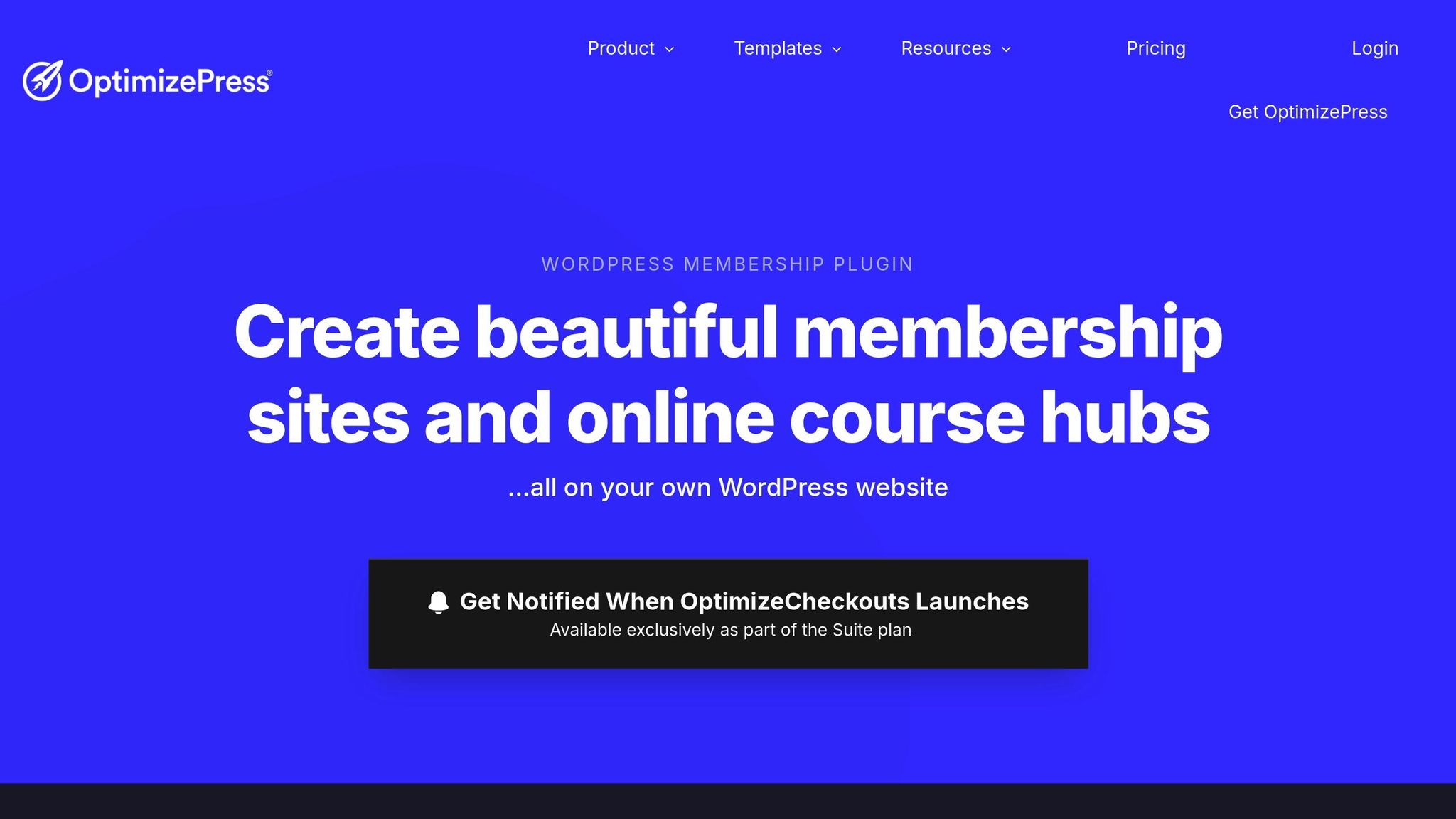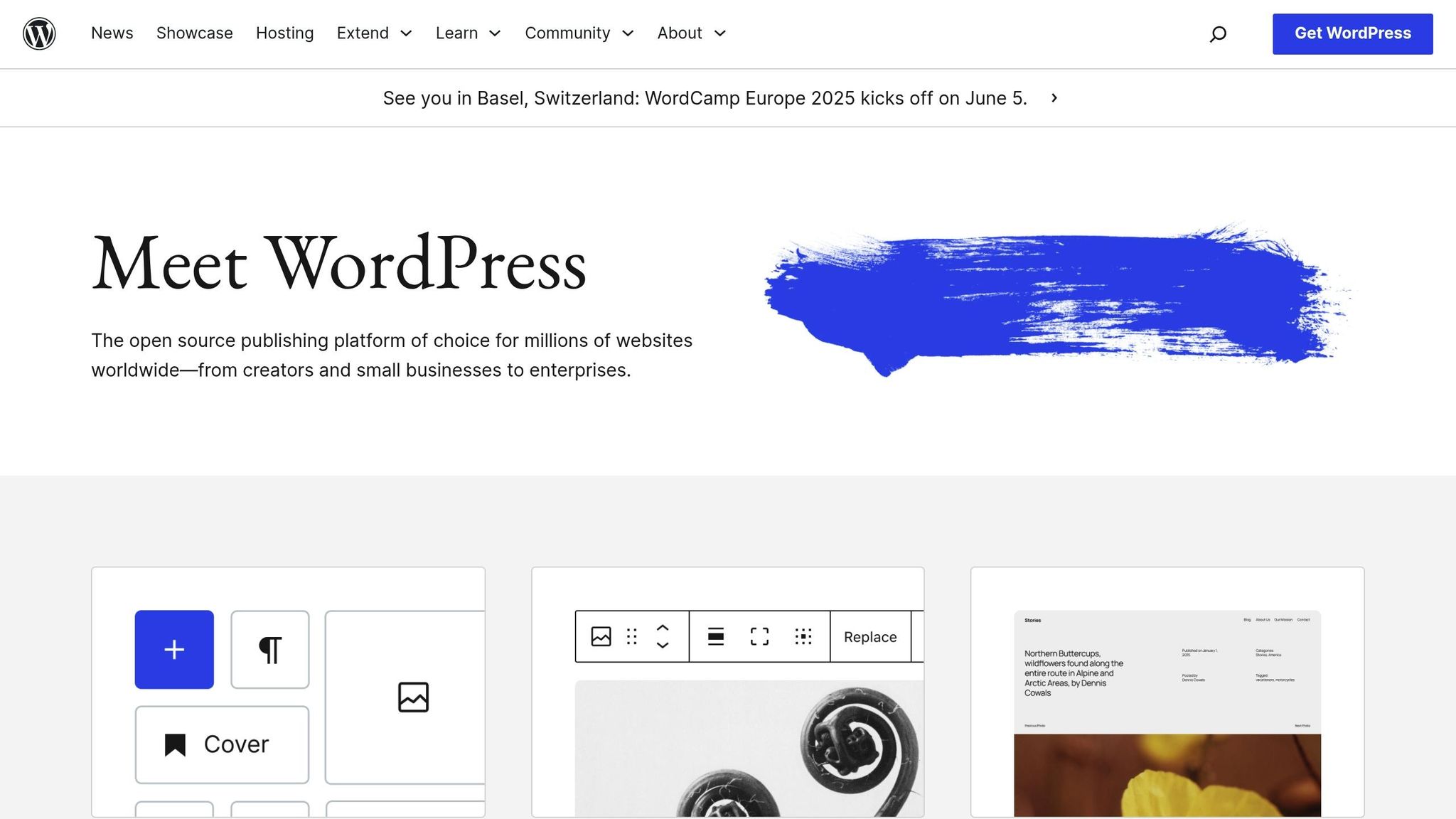A well-organized URL structure is the backbone of a successful membership site. It impacts user experience, SEO, and content security. Here’s what you need to know:
- User-Friendly Navigation: Clear, descriptive URLs like
/courses/beginner/lesson-1make it easier for members to find content and understand site hierarchy. - SEO Benefits: Search engines prefer clean URLs with keywords and logical hierarchies, improving visibility for public content.
- Enhanced Security: URL structures aligned with membership levels help control access to premium content and protect member data.
- Scalability: Logical URLs simplify adding new content, managing access levels, and tracking engagement as your site grows.
For example, Pro Membership Sites uses structures like /courses/[course-name]/[module]/[lesson] to create intuitive paths, integrate access controls, and simplify content management.
Whether you choose a custom solution or standard WordPress plugins, your URL structure should match your site’s needs, ensuring smooth navigation, strong security, and SEO optimization.
OptimizePress Membership Site Tutorial For Beginners: Complete Membership Site Creation Guide

1. Pro Membership Sites Setup

Pro Membership Sites uses a URL structure designed for easy navigation, strong security, and SEO-friendly organization.
Here’s an example of their logical URL hierarchy:
/courses/[course-name]/[module]/[lesson]
/membership/[level-name]/[content-type]
/resources/[category]/[resource-name]
These clear, descriptive URLs make it simple for users to navigate membership content.
"Both you and your members will find it easy to navigate our websites. Our designers are trained in functional user experience design. Simply put, we make it easy for you to add and remove content and easy for students to consume it."
- Pro Membership Sites
Integrated Access Control
Pro Membership Sites incorporates tools like MemberPress, AccessAlly, and TutorLMS to manage access control directly within the URL structure. This setup ensures:
- URLs automatically adjust based on membership levels.
- Content access is restricted according to user permissions.
- Team leaders can oversee specific content sections.
- Premium content stays protected.
The system also supports dynamic content display. When members log in, they only see content they’re authorized to access, all while maintaining a consistent navigation experience. This setup not only improves usability for members but also simplifies content management for administrators.
Benefits for Administrators
The organized URL structure offers several advantages for site admins, including:
- Adding new courses or resources with ease.
- Adjusting access levels quickly.
- Tracking member activity and engagement.
- Implementing analytics efficiently.
- Managing content updates seamlessly.
This combination of intuitive navigation and secure access control makes managing membership sites straightforward while ensuring premium content stays protected.
2. Standard WordPress Plugin Setup

WordPress membership plugins use URL structures that are based on its built-in permalink system. Unlike Pro Membership Sites, these plugins rely entirely on WordPress’s native features for managing URLs and controlling access to content.
Common URL Patterns
Here are some typical URL structures used by WordPress membership plugins:
/courses/[course-slug]
/lessons/[lesson-slug]
/members/[membership-level]/[content]
/resources/[resource-category]/[resource-name]
These patterns work seamlessly with access controls to secure member-only content.
Access Control Integration
Membership plugins handle content protection through several methods:
- Page-level and category-based controls: Ensure URLs remain consistent while restricting access based on user permissions.
- Server-side validation: Confirms member permissions before granting access.
- Custom redirects: Direct unauthorized users to specific pages, such as login or upgrade prompts.
URL Structure Considerations
When designing URL structures for membership plugins, these factors are important:
| Aspect | Implementation Detail | Impact |
|---|---|---|
| SEO | Clean, keyword-rich URLs | Better visibility in search engines |
| Security | Avoid sensitive data in URLs | Keeps member content secure |
| Navigation | Logical content hierarchy | Makes it easier for users to find content |
| Access Control | Permission-based routing | Ensures only the right users access content |
Technical Implementation
WordPress rewrite rules play a key role in managing these URL structures:
- They ensure accurate routing for member requests while working with caching systems.
- Support is included for custom post types.
- They integrate directly with WordPress’s core features.
This setup ensures member requests are routed correctly, permissions are enforced, and content delivery remains secure. It also provides a solid foundation for comparing plugin-based solutions to custom-built approaches.
sbb-itb-dee25d2
Strengths and Limitations
Let’s break down the key differences between these two approaches:
| Aspect | Pro Membership Sites Approach | Standard WordPress Plugin Approach |
|---|---|---|
| Content Ownership | Complete control over URL structure and no platform restrictions | Constrained by the plugin’s pre-set URL patterns |
| Customization | Unlimited options for custom URL structures | Limited to the plugin’s built-in settings |
| User Experience | Navigation paths tailored using effective UX design principles | Follows the default WordPress hierarchy |
| URL Management | Full control over organization and structure | Restricted by the plugin’s framework |
| Technical Control | Ability to adapt and modify as requirements change | Dependent on plugin updates and limitations |
These distinctions highlight how each method affects the overall member experience and operational flexibility.
"you shouldn’t build your house on rented land."
Custom solutions provide maximum control but require more complex setups, while plugins offer quicker, simpler implementations with less flexibility.
Points to Consider:
- How easily can content be transferred within the custom hierarchy of Pro Membership Sites?
- Can the approach handle growing complexity as your content expands?
Choosing the Right URL Structure
Your URL structure plays a big role in both user experience and search engine performance. Picking the right format depends on your site’s needs and long-term goals.
Here’s a quick guide to help you decide the best structure for your site:
| Requirement | Recommended URL Structure | Benefits |
|---|---|---|
| Complex Course Hierarchy | /courses/category/lesson-name | Makes navigation easy and keeps content well-organized. |
| Team-Based Access | /teams/team-name/resources | Simplifies resource management for team leaders. |
| Membership Levels | /level/silver/content-name | Helps control access and creates upsell opportunities. |
| Integration Needs | /resources/crm/tutorials | Makes tool integration and resource categorization straightforward. |
Your URL structure should align with your content strategy. For example, if you’re planning to offer multiple course categories with different membership levels, a structure like /courses/business/beginner/lesson-1 provides clear navigation and keeps everything organized.
A well-thought-out URL structure also allows you to:
- Use SEO-friendly formats with relevant keywords.
- Build logical hierarchies that grow with your site.
- Easily add or reorganize content in the future.
- Integrate seamlessly with tools like email marketing platforms or CRMs.
For sites with a lot of educational content, consider a structure that mirrors your course hierarchy. This makes it easier for users to find what they need and improves overall content discovery.
FAQs
Why is a well-structured URL important for membership sites?
A well-structured URL is essential for improving navigation and usability on membership sites. It helps members quickly find the content they need and ensures administrators can efficiently manage resources. Clear, organized URLs also enhance search engine optimization (SEO), making your site easier to discover online.
By prioritizing intuitive URL structures, membership sites can deliver a seamless experience for users while maintaining a clean, professional design.
What are the benefits of using a custom URL structure for membership websites instead of relying on standard WordPress plugins?
Using a custom URL structure for your membership site offers several advantages over standard WordPress plugins. A custom structure allows you to design URLs that are clear, user-friendly, and optimized for search engines, which can improve your site’s visibility and user experience. It also gives you greater flexibility to align URLs with your brand identity and content hierarchy.
In addition, a custom URL structure can enhance site performance by reducing unnecessary query strings or parameters often generated by plugins. This streamlined approach can make your site easier to manage and more professional, especially for scaling your membership offerings. For tailored solutions, working with a professional service that understands membership site needs can make a significant difference.
How can a well-planned URL structure improve content security and restrict access based on membership levels?
A thoughtfully designed URL structure plays a key role in securing content and managing access for different membership levels. By organizing URLs strategically, you can ensure that only authorized members can view specific pages or resources, enhancing both security and user experience.
For example, membership sites can use URL patterns to segment content by access level, such as /premium/ for exclusive material or /basic/ for general access. This makes it easier to control permissions and manage visibility based on user roles. Additionally, tools and customizations allow for seamless team management, including features like distinct access for team leaders. With the right approach, URL structures can help protect your content while maintaining a smooth, intuitive experience for your members.





